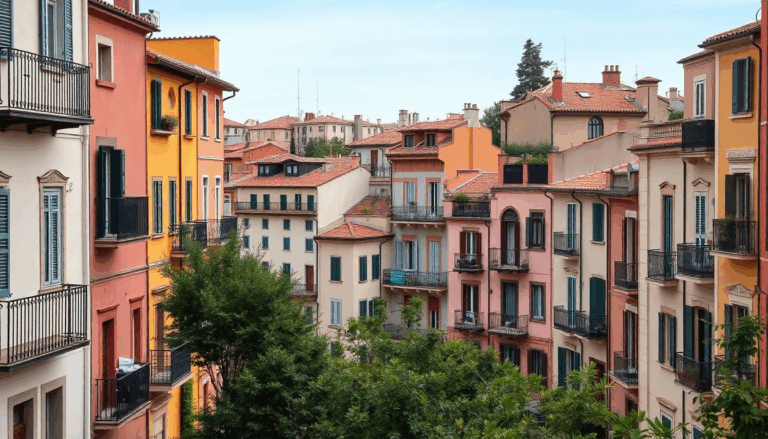Buying a home is often seen as a rite of passage, a dream fulfilled. But in the intricate landscape of Italian real estate, it can quickly become a fiscal maze if you aren’t equipped with the right knowledge. The Italian tax system, with its myriad of levies associated with property ownership and
transactions, can be downright bewildering. So, how do you navigate this labyrinth of TARI, IMU, and other taxes? Let’s unravel these complexities and demystify the fiscal obligations that come with your property investments.
Understanding TARI: The waste tax
The Waste Tax (TARI) is a crucial consideration for anyone owning a property in Italy. This tax funds the collection and disposal of urban waste, ensuring our streets remain clean and
livable. Interestingly, TARI isn’t just a burden for property owners; tenants who have a lease longer than six months are also liable for this tax. The TARI comprises a fixed fee, reflecting the essential service costs, and a variable fee based on the waste produced. It’s a bit like paying a bill that fluctuates with your lifestyle.
Calculating your TARI is not as straightforward as it seems. Each municipality sets its own
rates annually, which can lead to surprising differences across regions. And let’s not forget the provincial surcharge aimed at environmental protection, which can add an additional 5%. Every municipality has unique payment deadlines, so staying informed is essential to avoid penalties – trust me, it’s better to be proactive than reactive!
IMU: The municipal property tax
The Unique Municipal Tax (IMU) is another critical component of property taxation in Italy, primarily affecting property owners and those with real rights on real estate, such as usufruct or habitation. One noteworthy aspect of the IMU is that the primary residence and its qualifying outbuildings are exempt unless they fall into luxury property categories. This exemption feels like a small victory in a sea of taxes, doesn’t it?
To determine the taxable amount for properties listed in the land registry, one must re-evaluate the cadastral income and apply an annual rate set by local authorities. Yes, it can seem intimidating at first, but with a bit of diligence, managing IMU shouldn’t be too daunting. I recall a friend who was overwhelmed by it all, yet with careful planning, he navigated through successfully.
The evolution of property taxation in Italy
Property taxation in Italy has undergone significant changes over the years. The long-standing ICI, introduced in 1993, was abolished in 2008 and replaced by the IMU, which expanded the taxable base and complicated exemptions. And who could forget the TARSU? The tax for waste collection was replaced by TARI in 2014, further complicating the fiscal landscape. With changing policies often influenced by economic crises, it’s fascinating (and sometimes frustrating) to observe how taxation evolves.
Recently, discussions have intensified around tax breaks for first-time homebuyers, a topic that resonates with many young people and families. The prospect of lower tax rates on registration fees for first-time buyers is alluring. For instance, did you know that the registration tax for purchasing from a private seller is just 2%, while it’s reduced to 4% when buying from a builder? The fixed fees for mortgage and land registry taxes make this an enticing opportunity, almost too good to pass up!
Tax benefits for first-time home buyers
Purchasing your first home isn’t merely a dream; it’s also a chance to benefit from significant tax incentives. The registration tax, for example, is a mere 2% for purchases from private individuals and only 4% when buying from developers. It’s as if the Italian government is saying, “Welcome to the neighborhood!” But there’s more; the fixed fees for mortgage and land registry taxes add to the appeal, making the financial aspect much lighter. I remember when a close friend of mine went through this process; the thrill of securing a great deal combined with the financial relief was palpable. Who wouldn’t want to share in that joy?
Considering a second home? Be prepared for higher taxes
Now, let’s talk about the scenario of acquiring a second home. This is where things can get a bit trickier. Purchases of second homes fall under the standard tax regime, meaning a registration tax of 9% applies, alongside IMU calculated at regular rates. You might think, “That sounds unfair!” but it’s part of the trade-off when investing in additional properties. The fixed nature of the mortgage and land registry taxes remains, which can add up quickly. Planning is crucial here, and I genuinely believe consulting with a real estate expert, like a notary, is advisable to navigate these fiscal waters smoothly.
In my view, understanding the ins and outs of property taxes in Italy isn’t just about avoiding penalties; it’s about making informed decisions that can lead to substantial savings and opportunities. Each tax comes with its own set of rules and nuances, and staying updated on these can significantly impact your real estate transactions.

